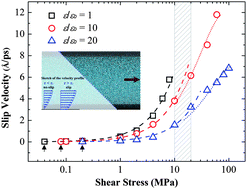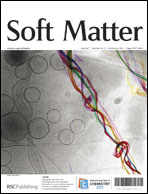Slip boundary conditions based on molecular kinetic theory: The critical shear stress and the energy dissipation at the liquid–solid interface
Abstract
The boundary slip and its mechanism were investigated using theoretical analysis and molecular dynamic simulations. We proposed a new slip boundary condition based on molecular kinetic theory, which was extended by the introduction of the critical shear stress, which determines the onset of the slip, and the energy dissipation near the liquid–solid interface at high shear stress. Our results revealed that the critical shear stress increases exponentially with the liquid–solid interactions. In particular, we discussed the energy dissipation contributed from the friction between the liquid layers near the interface. The results demonstrated that the momentum transfer among the liquid layers and the bulk liquid must be considered according to the wetting conditions of the solid surface, which can interpret the contradictory published results of slip behavior at high shear stress. The analytical expression of our slip boundary condition can be compared with the simulation results since it uses parameters consistent with that used in our molecular dynamic simulations. Furthermore, we suggested a dimensionless number to qualify the transition from Poiseuille-like to plug-like flow in the


 Please wait while we load your content...
Please wait while we load your content...